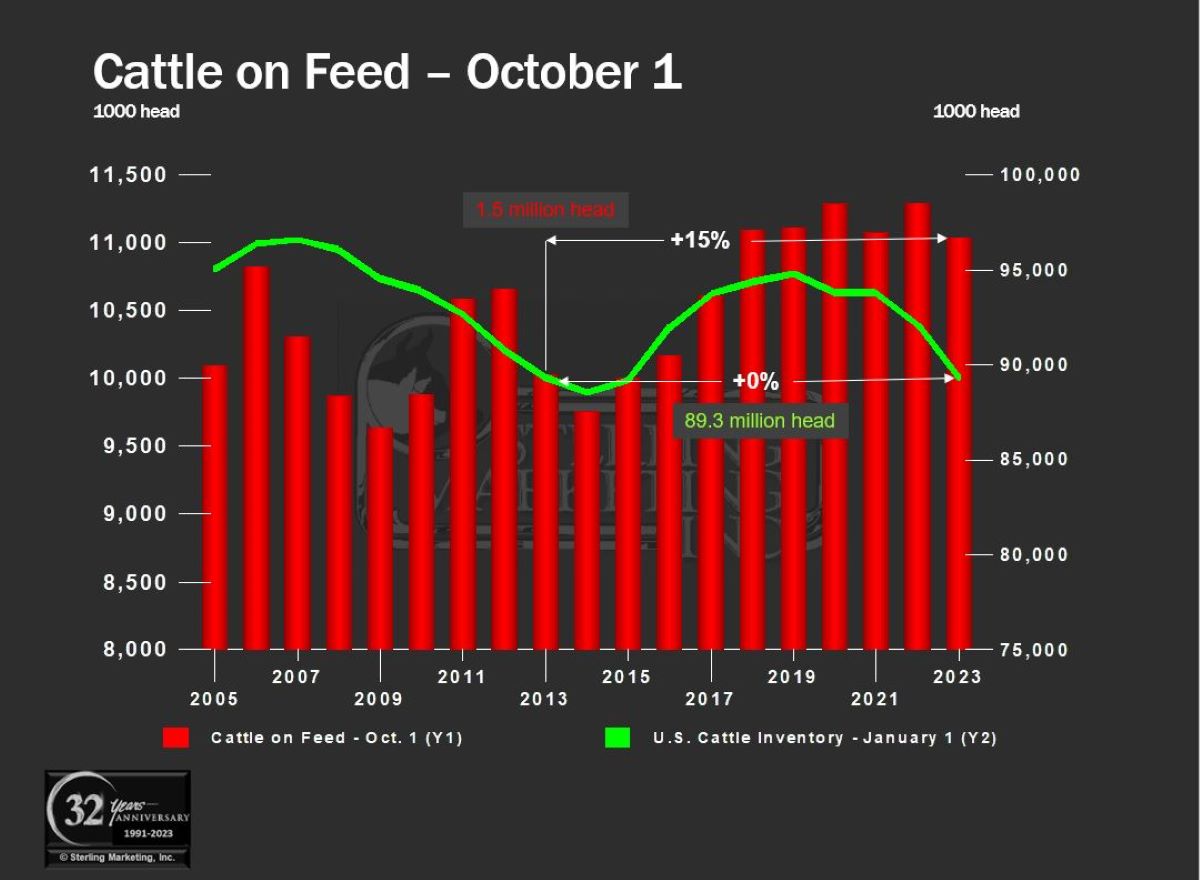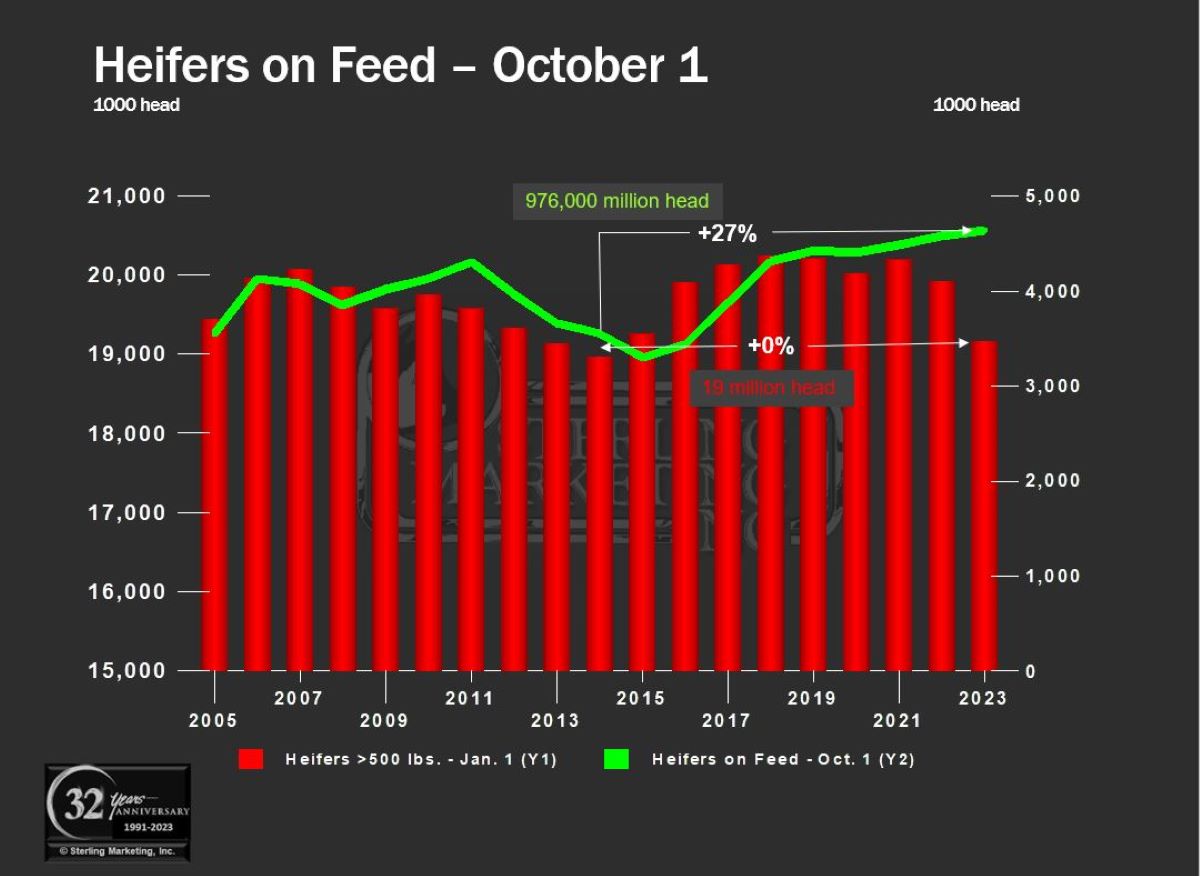Nalivka: Squaring the Oct. 1 Feedlot Inventory with Total Cattle Numbers

I am always cautious when reviewing USDA’s Cattle on Feed reports and that may be an understatement. There is simply too much opportunity for “misleading” information from the surveys, but that certainly does not mean that they are not part of the market analysis.

My caution in using the cattle on feed data goes back to when I worked for USDA as a livestock economist in D.C. (1984). However, I do examine the reports when they are released. My initial reaction to the October 1 On-Feed report that indicated a 1% year-over-year increase in the on-feed inventory resulting from a 6% increase in placements during September was that it was just another Cattle on Feed report with questionable data. However, another relevant question may be raised that goes well beyond the number of cattle on feed on October 1, 2023. How do feedlot inventories stack up against the total cattle inventory and cattle slaughter?
For comparative analysis of cattle numbers in 2023 and going forward, analytically it makes sense to go back to 2013 – 2015. According to USDA’s January 1, 2023 Cattle Inventory, our cattle numbers at the beginning of this year were about equal to our cattle inventory as at the beginning of 2013. Furthermore, this year’s beginning herd size made sense given the depth of the 2021-2022 herd liquidation. However, when I (emphasis on I) dug deeper and considered that inventory against the: 1) Oct. 1 feedlot inventory, 2) September feedlot placements, 3) the total number of heifers weighing over 500 lbs. in the Jan.1 Cattle Inventory, 4) the reported number heifers on feed, and finally 5) heifer slaughter through August. Looking at all the data and comparing the two years raises the question – was the January 1, 2023 Cattle Inventory understated or is the Oct. 1, 2023 Cattle on Feed inventory overstated?

According to the October 1 Cattle on Feed report, there were nearly 1.5 million more cattle on feed this year than on October 1, 2013 against a reported total cattle inventory that is the same as 2013 – 89 million. Not to get into the weeds with numbers, but there are inconsistencies. I am the one who is looking to dig into the numbers, but bear with me. So, aside from the total number of cattle on feed, the number of heifers in this on-feed inventory was 27% higher than in 2013 with a total reported heifer inventory (weighing over 500 lbs.) that was equal to 2013. At the same time, the number of heifers that were slaughtered from January 1 – September 30 this year was 7% higher than for the same period during 2013.
My conclusion – the October 1 Cattle on Feed Inventory was overstated (heifers?) or the Jan. 1 Cattle Inventory was understated or perhaps, both. I lean toward the first option – Cattle on Feed reporting error. That error is more likely than one in the Jan.1 Cattle Inventory, particularly with the large drop in steer slaughter so far this year. However, if cattle inventory was understated, there are much greater implications for larger cattle numbers and lower-than-expected prices in the 2024 the outlook.
John Nalivka is president of Sterling Marketing, Inc., Vale, Oregon.







